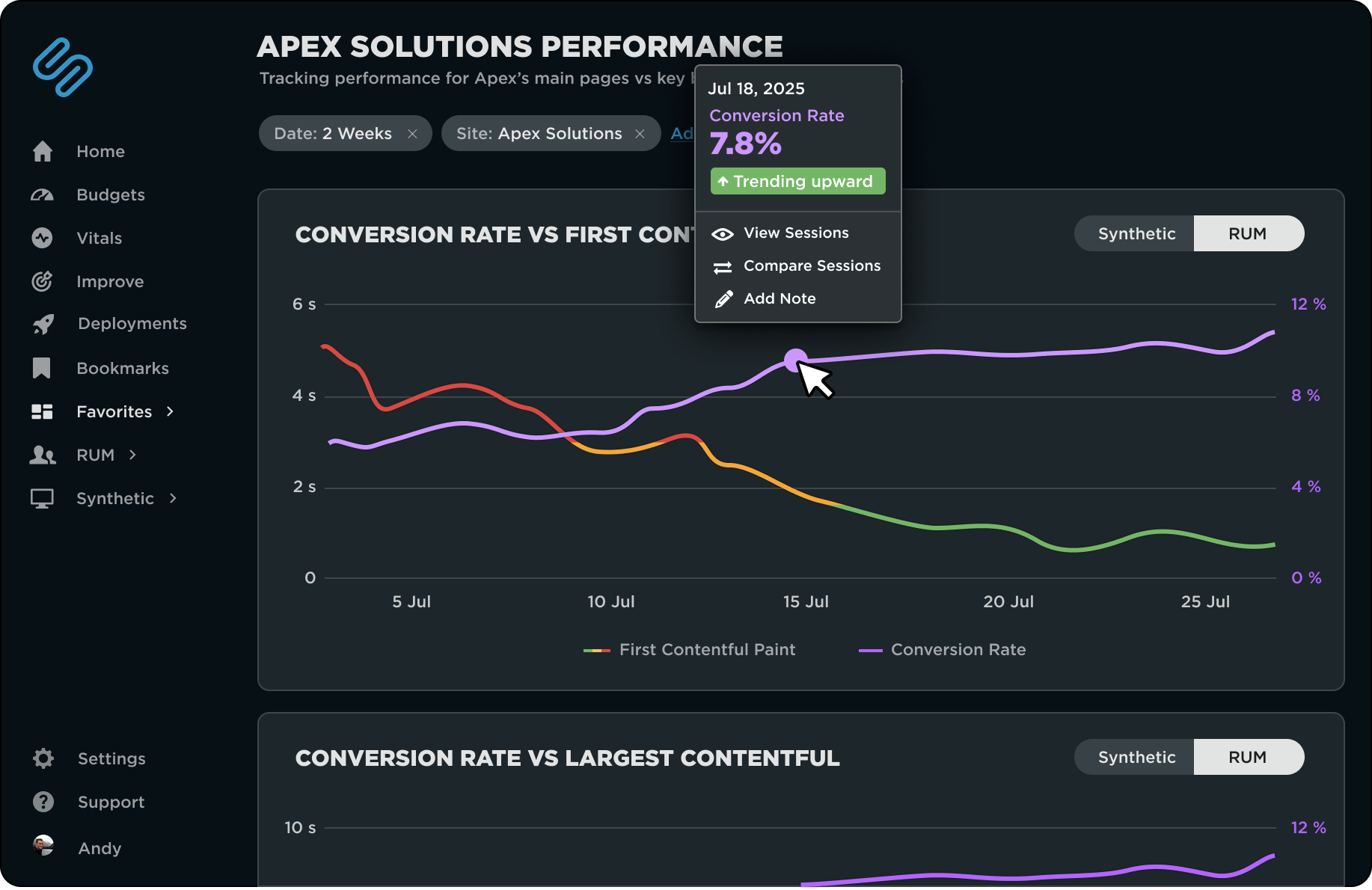A fast website is good for your users – and for your business
When your site is slow, your business suffers. Slowness affects every metric you care about: bounce rate, conversion rate, customer retention, revenue, and search rank.
SpeedCurve gives you the tools, diagnostics, and insights to improve web performance – and measure the impact on your business.
Easy setup • No credit card required


































